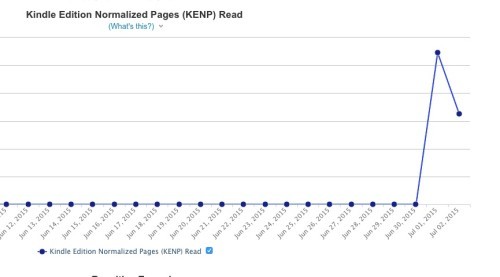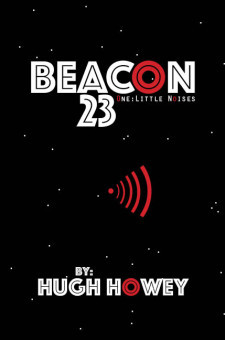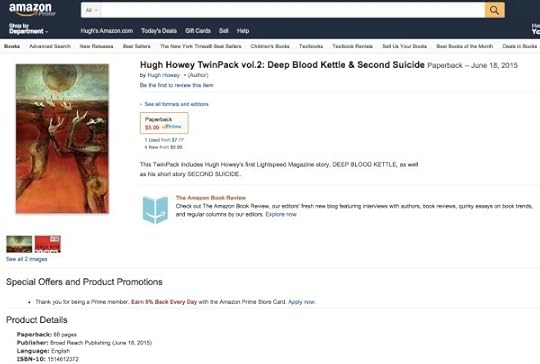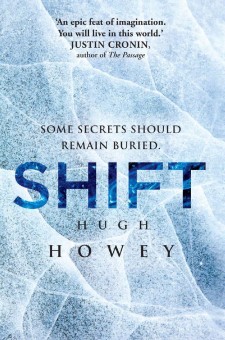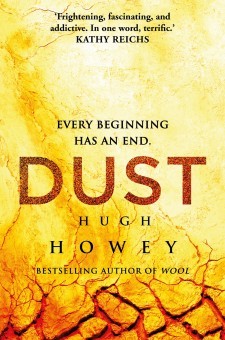Hugh Howey's Blog, page 18
July 3, 2015
FlipBook Unboxing Part 2
The first two of these flipbooks came in last week, and I unboxed them here. Just got the latest two in, and the video is below. I LOVE how these things came out. The matte covers are sweet. And the pagination looks great. This has been a really fun project, and a commenter on Twitter today highlighted the need for it. There are a lot of readers who only read print, and delivering short fiction to them is tricky.
More to come. These two volumes will be available on Amazon and through bookstores in a week or so. Volumes 1 and Volumes 2 are already available.
The post FlipBook Unboxing Part 2 appeared first on The Wayfinder - Hugh C. Howey.
July 2, 2015
The Great KU Flip-Out of 2015
It’ll be fun to tell our kids where we were when KU 1.0 turned into KU 2.0. We’ll tell them how in the aftermath we roasted rats and pigeons over upturned and burning cars. How we tended to the wounded, finishing off those we knew would not make it. How we drank our own urine in order to survive. How the blood-red moon set over a charred and ruined landscape. Yes … it was a long day. Full of complete and utter nonsense.
A few observations from yesterday:
1) It’s too damn early to observe anything. Authors were predicting the effect KU 2.0 would have on their careers and sending requests to Amazon customer service to PULL, PULL, PULL! from KDP Select like Wall Street traders on the floor of a panic. All based on a dashboard graph on Day 1 of reporting.
That anyone trusts a brand new reporting system after eight hours of being live is bizarre enough. But what I can tell you from looking at my report at 7am this morning is that yesterday’s reporting was LOW. I’m at over half of yesterday’s page count at 7am. And Amazon often works off PST. So 4 hours today is already over 60% of what 24 hours yesterday gave me. And I haven’t released anything new.
2) The second thing people are doing is equating their old page count for works to the new KENPC. But many are reporting a nearly doubling of KENPC. A 300 page work can come out to over 600 pages, as measured by the new system. It appears that 40,000 – 50,000 words, fully read, will equal the lowest range of the KU 1.0 borrow rates. This doesn’t mean short story writers today are being screwed; it means novella and novel writers for the past year were being screwed. Amazon fixed this.
3) The only people who should be complaining about KU 2.0 are the ones who think it’s fair for writers to be renumerated based on the number of titles they produce, rather than the hours they spend writing, or the hours readers spend enjoying their works. I keep seeing people say it’s not fair that they no longer get paid the same for a 5,000 word short that everyone else gets paid for a 100,000 novel. Seriously. People are saying this. Because both authors wrote 1 title, right? And 1 = 1. It’s not fair!
I don’t even know how to process this. It doesn’t take as long to write a short story. You shouldn’t get paid as much. End of (short) story.
4) Kindle Unlimited and the Lending Library are not retail systems. They are cloud-based rental systems. When you pay $100 a month for cable or satellite TV, you don’t get to own and keep any of what you watch. You can delay losing the work on your DVR, just as you can keep an unread book for weeks from the library, but you aren’t buying those TV shows. Authors are acting like rentals should equal sales. In what universe does this make sense? And yes, the shows that get watched the most come with the highest price tag from distributors. This is a normal model we’re freaking out over.
5) Getting hung up over the pay-per-page of $0.0057 is silly. Amazon is paying out $11,000,000 in July. That money is being evenly split based on hours of enjoyment provided to their customers. Those hours should correlate more closely to hours invested by the author than in the previous system. The point is, all of that money is being disbursed. The amount of pay going to authors just went UP in absolute terms. Freak out when the pool starts to go down, not when the metric of division gets a fancy new decimal point.
6) KU is voluntary. These changes only apply to KDP Select and those authors who have some works that are exclusive to Amazon. You can take your works out of KDP Select. You can try a few works for 90 days and change your mind. You can do whatever you want. You can even complain and hope that Amazon will change back to the old system, because … shocker … it appears that they listen to the indie community and take our opinions seriously and make changes accordingly.
Compare that with mine and colleagues’ dealings with other online retailers, whose response to frequent criticisms has been, “But, we’re _______” (Insert name of large tech company). Whether or not Kindle Unlimited and subscription services are good for authors is a separate issue from the change to KU 2.0. I think much of the arm-flapping is coming from people who don’t like KU at all and wish all subscription services would go away. If so, they spent their time yesterday talking about the wrong company.
On Monday, another subscription service, Scribd, pulled 80% – 90% of its erotica, because its financials do not make any sense. Scribd’s business plan has been to beg for venture capital and distribute it to publishers and indies, without any model for turning a profit. When their system collapses, everyone will be out of a steady market for reaching readers and earning pay. They’ll have been greedily bled dry and bankrupted. They provided no warning that this would happen, just yanked works right off their shelves.
What do I think about subscription services, now that we’ve had one for over a year? I’m glad I asked.
I see KU as being far better than a used bookstore, which leaves authors out of the money altogether. I see them as being better than libraries, because they pay more, and they funnel more readers into purchases by mixing rental and retail in one location. I see KU as better than permafree. And these are all things I support and love. I love used bookstores and want my books in them. I love libraries and want my books in them. I love and employ permafree. KU is better than all of them.
The change to KU 2.0 has me revisiting whether or not to move my novels back into KDP Select. But you know what? I might take an entire day to make that decision. Hell, I might take a week. Or even a month! And I might try to take a deep breath somewhere in there, and think about this program for what it is, and not what it used to be, or what I wish it were, or equate it with retail, or pine for a program that can be gamed and provides a worse experience for readers.
ETA: Holy heck, I haven’t seen this much vitriol over an Amazon move since … the last time Amazon made a move. I’ve got people on Twitter telling me to go *@ myself, you entitled piece of &@$%, and things normally reserved for authors doing Twitter PR.
I would say that I’m sorry that people are losing income over this, but I’m not. I don’t say that with spite or with warm fuzzies. I’m not happy people’s income went down. I’m also not upset for them. The system wasn’t fair before, and it’s more fair now. I’m happy that the system has been improved.
For people making a livelihood off a subscription service that didn’t exist 14 months ago, I don’t know what to say. I’ve never banked on earning a living from a rental system. KU has always felt like a bonus, but it appears that for some authors, the borrows were more important than the sales. I’ve never considered this might be the case for writers. All I can suggest is no one quit their day job over these brand new and untested systems. This isn’t book retail. This is the exploration of something new. And it might suck for all of us in the long run. For me, it’s too early to tell.
I’ve been accused in multiple places for having a sweetheart deal with Amazon that gives me KU status without the exclusivity. This isn’t true. Probably won’t stop the claims. Just putting the truth out there to see what people choose to do with it.
I’m sorry I’ve offended anyone. But I’m not sorry for these changes to KU. I think they were needed from the start. I don’t think Amazon could’ve predicted the outcome of an even split based on a 10% read. They are correcting, and they’ll correct again. So compile your ideas, your wishes, what you think would be fair for children’s book authors and authors of non-fiction, and make your voices heard. I wish you all the best of luck. Write good shit and be kind to one another. Except for me. If it helps blow off some steam, kick me around in the comments. I almost can’t feel it anymore. :D
The post The Great KU Flip-Out of 2015 appeared first on The Wayfinder - Hugh C. Howey.
June 30, 2015
Why KU Short Fiction Still Makes Sense
I assumed six months ago that the KU payout terms would eventually change. I wasn’t sure if Amazon would go with a pay-by-page scheme or something that put works in tiers by length, but many observers knew this was a question of “when” and not “if.” Despite the overblown and horribly researched coverage in the wider press, the new payout terms fix a glaring discrepancy in how authors are rewarded for their efforts and how readers’ behavior will influence what is offered across Kindle Unlimited.
When I realized the change that was coming, I started concentrating on short stories. I began planning serials. I knew my time would be better spent mixing at least 6 to 12 shorter pieces in with each of my novels. In fact, I think most people analyzing KU and the length of works to offer are getting it wrong. KU does not reward longer works: It rewards good works. It rewards gripping works.
A lot of authors are going to make a huge mistake as they write with KU in mind. Chapters that would’ve been cut for being boring filler are going to be left in place, as writers now think they are being paid by the pound. Nothing could be more wrong. To understand why I stand to make more money with short fiction than with novels, a few different mental mistakes have to be corrected. Let’s go through each one:
The first mistake we make is to think that a system that was overly generous to short fiction, once corrected, is now punishing short fiction. This is absurd. The playing field is now level. A page read is a page read. Just because a system was unfair in one direction in the past (and it was) does not mean it’s unfair in the other direction now. In fact, short fiction still has some amazing advantages, which we’ll see in a moment.
The second massive mistake I see people make when discussing the new KU is to assume that the amount of work that goes into a novel and a short story is even close to the same. Because we were paid the same in the previous system, no matter the length, we’ve somehow lost sight of the very obvious truth that 60,000 words of writing is still 60,000 words of writing. If you package it as a novel, or if you release six 10,000 word short stories, you’ve still written and revised roughly the same amount. If the reader gets through all those words, you’ll get paid the same per hour of work.
So instead of comparing a 60,000 word novel with a writer who put out a single 6,000 word short piece, the fair comparison is to realize the second author probably released TEN works in the same amount of time.
Which brings us to the reality that everyone knows but no one will admit: Most KU downloads aren’t read to completion. Many are sampled. When the works feel free (I know there’s a monthly fee), there’s no guilt-induced pressure to finish any work. So a reader might grab four novels, try each, and then finish the one that grabs them. If you pad your novel, or open it slowly, thinking you’re going to get paid for every one of your 300 pages, and I write a 20-page short story that readers can’t put down and fly through, then which of us spent our time more wisely? And which of us provided the reader with a better customer experience?
A downside to short fiction is more cover art expenses. An upside is much lower editorial expenses. I see these as a wash. Plot can be so much tighter in short fiction that developmental editing is much reduced. And most writers can get 10,000 words largely error-free before sending off to a copyeditor. I find that editing a 60,000 word novel takes much more than merely six times longer than a 10,000 word short. And serialized works benefit from the re-use of cover art designs, so the cost there isn’t really six times as much (to stick with our hypothetical examples).
Then there are the two HUGE benefits to short fiction, both of which increase the chances of something taking off. The first is the visibility of having more works peppered across Amazon’s storefront (we’re talking KU, so keep in mind these works are exclusive). More works means more reader impressions. It means more recommendations from Amazon to customers. It also means writing six different stories, with different characters, and seeing which ones do the best, then writing sequels for those pieces.
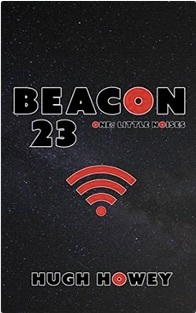 BEACON 23 took off for me in a pretty spectacular way, with lots of reviews, lots of call for sequels, and even the great Warren Ellis plugging the work in his latest newsletter. Likewise, GLITCH has been a fantastic seller. Other works have done okay but not nearly as well by comparison. And I can never guess which ones will do the best. But by writing lots of stories, I can invest my time following up with the worlds that readers found most alluring. Again, this means an improved customer experience and a more efficient use of my writing time.
BEACON 23 took off for me in a pretty spectacular way, with lots of reviews, lots of call for sequels, and even the great Warren Ellis plugging the work in his latest newsletter. Likewise, GLITCH has been a fantastic seller. Other works have done okay but not nearly as well by comparison. And I can never guess which ones will do the best. But by writing lots of stories, I can invest my time following up with the worlds that readers found most alluring. Again, this means an improved customer experience and a more efficient use of my writing time.
Yet another advantage: There is a massive bonus when readers finish your work. In the old KU system, the bonus seemed to have come if readers got to 10% of your work, which was when the per-unit payout was triggered. But now, the advantages to getting a reader through to the end of your story are compounded, because a finished work is more likely to be a reviewed work. Even if readers just star-rate the work, this will influence whether or not Amazon recommends them more of your titles. And word-of-mouth can’t get going unless readers complete a story and find the end satisfactory. This means my completed 20-page short story doesn’t just pay out the same as the first 20 pages of an abandoned novel — it also gets the bonus of completion, which the abandoned work doesn’t.
This doesn’t mean novels aren’t more fairly rewarded under the new system. Of course they are. And many readers want thick works that they lose themselves in for days and weeks. If you write that sort of work, you are going to do very well with the new KU. We should all be celebrating that (writers, readers, and the retailer). But the idea that novels are more powerful for the career writer than short stories simply doesn’t hold. The advantages of competent serialization and a wide mix of offerings are the same old advantages. The pay might not be skewed like it was, but the revenue per hour worked is probably still better for short fiction, and all the other bonuses of visibility, reviews, algorithms, diversity, and word-of-mouth still apply.
I’ll be very sad to see authors creating boxsets of their works, thinking that size now matters. I think they’ll lose opportunities this way. If there’s one story in there that will cause readers to pick up a different work, then you’ll miss the reward of them getting to the works that come after. And the readers will have missed out on the enjoyment. And Amazon will have missed a positive customer experience. But if those works are separate, then an abandoned read doesn’t hurt as much.
Another way to think about the new KU is this: You aren’t paid for every page read so much as you lose money for every page left unread.
For novel writers, this means thinking of every scene as its own short story. It means thinking of every chapter as its own separate work. Does the world-building power readers forward? Does the tension tug them along? Do the characters come alive and chase readers all the way to the end? If any part of the story is weak, then get rid of it. Delete it. Or your novel will be like an anthology with a story no one can finish sandwiched in the middle. You run the risk of all the hard work that comes after being for naught.
Make no mistake, KU now rewards one thing, and one thing only: Reader enjoyment. This is how it should be. We aren’t writing by the pound; we are writing by the pulse. It’s hearts that we should concentrate on pounding, not keyboards. Write well and write efficiently. Write what you want. There’s a good chance there are more readers out there just like you, looking for the same thing.
The post Why KU Short Fiction Still Makes Sense appeared first on The Wayfinder - Hugh C. Howey.
June 29, 2015
Iconic Cover Art
Bella Andre and I were sitting together at a book convention once, gabbing about shoes and handbags, when an author came up and asked what we thought about their book cover. Funny they should ask the two of us, because Bella is one of the absolute best authors in the multi-verse at putting together her own cover art. (Just take a gander if you don’t believe me.) And I’m the absolute worst.
But I love doing my own covers just as much as Bella has to do her own covers. For her, it’s because she knows no one can do a better job. And she’s right. For me, it’s because I love every aspect of book creation and presentation, no matter how much I suck at it.
On this day, at the con, Bella and I both looked at this author’s cover, and we looked at each other. And I was thinking, “You should handle this, because you’re the talented one.” And Bella was thinking, “This looks as bad as one of your covers, so maybe you should go for it.” What we did instead was demonstrate to the author, so they could see for themself.
I took the book and began walking away from the table. I asked Bella to stop me when the book became “Amazon size.” That’s the size the book will appear to anyone scrolling through an online retailer. Bella kept waving me back. Fifty feet. A hundred feet. “Stop,” she said.
“What do you think of the cover?” she asked the author.
The author nodded. “I see what I need to do,” they said. They took their book, thanked us, and went off with the sort of determination that causes me not to worry about people.
Bella looked at me like, “You do know that people think they can get away with covers like that because of you, right?”
I looked at her like, “Bella Andre, you’re so dreamy!”
It used to be said that great cover art becomes iconic over time. I can think of a dozen or so covers that I can still pick out from a thousand paces. When I first saw the red cover for WOOL that Random House came up with, I had that sort of feeling about it. There had never been a cover quite like that. It would stand out. Be instantly recognizable. I loved it.
It’s the grabbiness at a distance that works. But more importantly these days, it’s the grabbiness at a tiny size. More than half of print books are now purchased online, which means what you put on the back of the jacket, or the inside flap, or how detailed your artwork is, has all become less relevant. These days, cover art needs to be not so much iconic as icon. We need to think about them as little clickable buttons. For design ideas, it’s time to start looking at our desktops rather than bookstore shelves.
My last two covers are, I think, good examples. And even if they are bad covers, they show the direction I’m thinking cover art should go. I put both covers together in just a few hours. I know it looks like they took a few minutes, but you aren’t seeing all the iterations I didn’t go with. First, THE BOX:
What’s unusual about this cover is that it intentionally uses whitespace to blend in with the background on Amazon product pages. The effect is what looks like a small square cover rather than a rectangular cover. You can’t pull this off in a bookstore. You have to think about the work and approach it from an online-retailer perspective.
Another point that I’ll go into detail about in a bit: Where else can you get away with not putting the author’s name on the cover? When you know the product page will feature the name, this is unnecessary. Again, not something you can pull off with a brick and mortar store in mind. This is cover art design tailored for the retailer you have in mind.
Another simple cover that works at a very small size. What I loved about this one was using nothing but typography for the graphics. It’s all done with font. Messages in the story are text-based and costly to send, so there’s a bit of subtle meaning there. Even the stars are just periods, and there’s meaning there as well.
Okay, neither cover is as pretty as Bella’s books, but hey, I’m not as pretty as Bella! But they’re covers that come from me, that relate to my story, that I put together myself, and that I’m happy with. They are meant to work as icons, not be iconic. But who says icons can’t? Maybe these won’t, but yours might.
 (Another aspect of cover art creation that I’ve encountered is the ability for readers and other writers to join in. After sharing my design for BEACON 23, author Andrzej Tucholski shared his version. After riffing on his design, I came up with what is currently the cover being used for the short story. This is cover art like jazz.)
(Another aspect of cover art creation that I’ve encountered is the ability for readers and other writers to join in. After sharing my design for BEACON 23, author Andrzej Tucholski shared his version. After riffing on his design, I came up with what is currently the cover being used for the short story. This is cover art like jazz.)
I know we are used to high-res graphics on covers, and that photography is the base for most cover art, and that’s been true for me as well. But all we really need is a cover that gives us the title and a taste for what to expect. We might think romance novels, for instance, need a shirtless hunk or a sexy vixen on the cover, but the bestselling erotica of all-time had a cufflink. And it could’ve been a render of a cufflink.
Would indie cover art look better or worse if we stopped trying to make them look like print books on a store shelf and more like a little bitmapped image you might click on to launch an application? I argue they would look better. The biggest mistake I see with cover art is that authors pay so much or work so hard on the art, that they shove the title way up at the top and their name way down at the bottom to not cover up what they’re proud of.
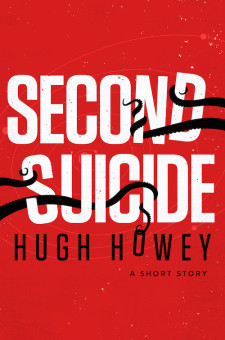 I think this is a huge mistake. Look at portfolios from professional cover artists. They cover up their background art with the title and the author’s name. They make the font big, bold, and legible. We should be doing the same thing. I would argue that graphics and art aren’t needed at all. Or better yet: Think of each letter in the title as a separate art element. That’s what M.S. Corley did with his cover for my short story SECOND SUICIDE, and it has become one of my all-time favorite covers:
I think this is a huge mistake. Look at portfolios from professional cover artists. They cover up their background art with the title and the author’s name. They make the font big, bold, and legible. We should be doing the same thing. I would argue that graphics and art aren’t needed at all. Or better yet: Think of each letter in the title as a separate art element. That’s what M.S. Corley did with his cover for my short story SECOND SUICIDE, and it has become one of my all-time favorite covers:
Or go the other route and leave off the title and author’s name completely. Insanity, right? This is something you simply can’t do with book jackets. But when you know all the metadata will be on the Amazon product page, you don’t have to put the metadata on the cover. That’s exactly what I did with my print flipbook, the TwinPack Vol. 2. Here’s what the product page looks like for this collection of two short stories, which are printed in reverse, with cover art on either side:
The title of the work and the author’s name are right there. Which allows me to leave Galen Dara’s fantastic cover art all alone to shine and be admired. Here, the idea of icon as iconic is taken to the extreme. The cover art is a striking image that works at thumbnail size, and it only advertises itself with its blend of colors and shapes, not with a label telling us what it is.
All different concepts, but the connecting theme is that our covers are going to be small, but they still have to stand out. We shouldn’t be designing covers to sit on store shelves, and we shouldn’t be afraid to take risks, to let the typography be more important than the artwork, or to go to the other extreme and let the product page handle the metadata, and let the art stand alone.
If you’re playing with your own covers, try taking that background image and fading it away. Try breaking up your title font so that each letter is on a separate layer, and then blow those letters up, shift them around, play with the kerning, stretch and warp them a little, so that the reader can tell that the word wasn’t simply typed out. Use large and bold text that’s easy to read at any size, and don’t be afraid to keep it simple. Don’t be afraid to break the rules. Build iconic cover art. The kind you want to click on.
The post Iconic Cover Art appeared first on The Wayfinder - Hugh C. Howey.
June 27, 2015
FlipBook Unboxing
First unboxing video in a while. A load of foreign editions arrived at my mom’s place here in the mountains, and proof copies of a special little project I’ve been working on.
I also want to welcome everyone to the new website, developed by Kristin Faulkner, who — as her website attests — makes magic with WordPress. The site is designed to be a little more static than the old blog, as there will be weeks where I won’t be able to update it. But you’ll be able to follow my travels with the Gallery page, which organizes the trip on a world map. Sorting books and finding what you want is easier on the Books page. And those who want Writing posts vs. Boat posts will find separate pages for each.
It looks great on mobile devices as well. Have fun kicking the tires. Now here’s the unboxing:
The post FlipBook Unboxing appeared first on The Wayfinder - Hugh C. Howey.
June 25, 2015
Let’s Kickstart a WOOL Film
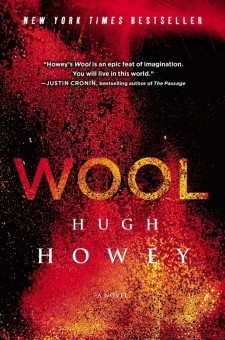 I know a ton of you are dying to see the world of WOOL come to life on the big or small screen. So I’m here to tell you how we can help make this happen: There has been some stirrings on the film side of things, and even the pessimist in me is sitting up and taking note of what’s going on. You may have seen the news that Nicole Perlman was hired to write a script for Ridley Scott. Now I’m going to tell you how we can really improve the odds of something going forward. And we only have a few months to do it, because come October, the option will expire, and I’ll be shopping the project to studios again.
I know a ton of you are dying to see the world of WOOL come to life on the big or small screen. So I’m here to tell you how we can help make this happen: There has been some stirrings on the film side of things, and even the pessimist in me is sitting up and taking note of what’s going on. You may have seen the news that Nicole Perlman was hired to write a script for Ridley Scott. Now I’m going to tell you how we can really improve the odds of something going forward. And we only have a few months to do it, because come October, the option will expire, and I’ll be shopping the project to studios again.
How do things get greenlit in Hollywood? By calculating risk. By looking at what similar films have done in the box office, and by looking at what kind of audience the source material has. WOOL has sold a ton of copies. A big bunch of tons. It has hit the New York Times list several times, in several formats (paperback, hardback, ebook). It’s been a Sunday Times bestseller in the UK. It’s the #1 work of science fiction in history in Taiwan. The work is in 40 languages. Millions of copies have been sold around the world.
Now we just need to amp up the noise for a few weeks.
To that end, I’ve dropped the price of the Omnibus to $2.99. And the same for SHIFT. And the same for DUST. You can get the entire trilogy for under $9 — less than the cost of a single novel from major publishers.
This is a steal. Most of you already own these works, so you can’t buy them to boost the noise, which leaves us trying to convince friends and family to pick up the novels. Even if they won’t read them for a long while, let them know that their $8.97 is going to help kickstart a major motion picture. Yes, it really has the potential to do that. For less than $9, or the cost of a movie ticket, they can help make your dream come true.
Oh, and my dream. :)
If this gains some steam, I’ve got some surprises in store. But first, we need to see if we can get the entire trilogy up into the top 500 on Amazon. They don’t have far to go. Then I’ll announce the next goal, and the crazy stunts I’m going to pull. And hey, it doesn’t hurt that this is a lot of fun reading material for very little money. So remind your friends that they don’t need Kindles to read these books. They can read on their computers, their iPads, their phones, pretty much anything with a screen. Or they can buy all three e-book editions simply to give the film chances a huge boost. Or they can get the works in print if they like. It all helps.
Just think: You could be the reason that Juliette comes to life on the big screen. How freaking awesome would that be? And how awesome to see a major motion picture kickstarted via social media and the voice of thousands of dedicated fans? We’ve seen this happen on Kickstarter, and I think it’s possible to influence a major studio as well. You all are already the reason this series has made so much noise and has sold so well around the world.
Some of you will convince one other person. Some of you have already sold dozens of friends on the series, and I’m sure you’ll be able to scrounge up more. Let’s get creative. For the rest of this month and the entire month of July, I’m leaving these prices at rock-bottom levels. And I’ve got some really wacky ideas to come. Some that may be more humiliating than previous crazy stunts I’ve pulled.
Here’s a trailer from Random House UK to get you pumped:
And here are the three books, if you want to share links:
Fingers and toes crossed!
The post Let’s Kickstart a WOOL Film appeared first on The Wayfinder - Hugh C. Howey.
A True Story
I recently shared an email from a middle grade author finding success with self-publishing. Now here’s a story of how non fiction can be inspired by self-publishing and take a non-traditional route. You often hear that non-fiction would suffer without a publisher to provide an advance. But what author really gets a yearly salary simply based on an idea for a book, then goes out and works on it full-time? That’s not how it works. Great books are going to be written no matter what. Karyn’s story is proof of that.
Dear Hugh
I first became aware of your books through Amazon, just after that thing called Wool first started to really take off. I bought the first omnibus in paper copy, loved it, read all the rest of your books too, and started reading your blog. I found all the stuff about self publishing, and the publishing industry in general, really interesting, from the point of view of a reader. Never in a million years did I think that I would be doing it myself one day, much as I would have loved to. I also had the great pleasure of hearing you speak, and getting my book signed at Camden Library during your Australian tour.
Then something completely and utterly amazing happened.
My two main areas of reading interest have been Science Fiction – hence my attraction to Wool, and Antarctic Exploration. (There is a deep connection between these interests, but it may not be obvious.) Last year I read a book by Australian historian David Day about one of my Antarctic explorer heroes – Sir Douglas Mawson. This book made be absolutely bloody furious – this “historian” had really taken an axe to Mawson’s reputation, and I considered much of his criticism to be absolute rubbish. But what could I do about it? Who am I to challenge a respected professional historian?
Taking a huge amount of inspiration from your personal story – I realised that I was no longer without the power to protest, and that I can have a public voice. I decided that I would write a response to this book – and publish it myself on Amazon as an e-book. I really did not care whether it would be a success, I just wanted it out there.
So I set about doing the research, and doing the writing. I’m in my late fifties, and had not written anything longer than a letter since I left university in 1978 – so it took a bit of effort, and some guidance from a highly literate friend to “excavate” my writing skills. When I finished I had a 27,000 word essay – fully footnoted. Effectively the Masters Degree thesis that I never did.
After several drafts, and a thorough edit, I thought it was actually quite good – but only two people had read it, my husband and my friend.
Gathering all my courage, I thought I would send it to the CEO of the Mawson’s Huts Foundation here in Sydney seeking comments I could use as a “cover blurb” equivalent for the e-book. What did I have to lose? I received a polite reply, no promises, but he would have a look at it.
A week later I had a phone call – he absolutely loved it, and said that the Huts Foundation would like to publish it for sale at their Museum shop. I was astonished. Since I didn’t do the work to make money, I immediately donated the print rights to the Foundation. If they wanted to publish it, they would bear the cost and keep the profit. I would keep the e-book. (Hugh’s note: I swooned when I read this.)
I then wrote to a publisher in the UK – seeking permission to use some quotes, and explained a little about the project. The publisher not only gave permission, he suggested that I contact the leading author in the field, who would also be very interested in what I was doing. I sent them my draft, and they both loved it too, and the publisher said he would be interested in publishing it in the UK. Additionally, I received a lovely response from that leading author. I was now even more astonished.
Once I told the Foundation about the UK publisher’s interest, they agreed for me to go with that deal – since the UK publisher would make a better job of the book production. So I have just signed my first contract – for print rights only, and I will still donate my royalties to the Foundation. The Foundation and the publisher are setting up a deal to sell my book, and several other related publications too, at the Museum shop. The Museum is attracting more than 20,000 visitors per year, so this is potentially good business for this small publisher, as well as contributing to the Foundation’s fundraising that pays for their work of conserving the historic site in Antarctica.
The publisher is going to ask the leading author to write a Foreword for me. And I will release the e-book myself at the same time as the hard copy comes out.
So in the space of a year – I have gone from being an infuriated reader, to a researcher and writer, to a soon to be published author (both trad and e-book), and who knows where that may lead. This is completely beyond my wildest imaginings. I am very fortunate in that it does not matter to me if I do not make any money out of this. I am doing it because it is a subject that I am absolutely passionate about, and I have re-discovered my passion for the work too – the research and the writing. I’m having the best time of my life, and have had an enormous amount of pleasure in doing this project. To have it so well received by people who really know their stuff, and who matter in this field, well, you can probably imagine my delight.
So to finish this story, I just wanted to say that I can’t thank you enough Hugh. Your inspiration really did start all of this for me. Your influence is spreading far and wide, including into the to non-fiction areas of writing and publishing. None of this story would have happened if I’d never read Wool, and never read your blog.
With sincerest thanks, and every best wish for your own impending voyages of exploration,
Karyn
Ladies and gentlemen, this is the democratization of literature on full display. This is what the New York Times and others are railing against. And it’s one of the purest, most beautiful, most inspiring developments in human history. And I don’t say that lightly.
The tools at hand (the internet for research, email for contact, social media for outreach, e-books for distribution) are truly causing a revolution in how we connect our minds and thoughts with one another. The combination of these forces is right up there with spoken language, the written word, and the printing press for changing the individual’s ability to contribute to our understanding of the human condition.
This happens both through fiction, with the expansion of empathy, and through non-fiction, with an expansion of facts and ideas. We shouldn’t overlook what is happening. What blogs have done for the news, and wikis have done for the warehousing of knowledge, e-books and self-publishing are doing for stories and ideas.
Those decrying the death of literature are being startled not by the collapse of anything important, but by the rise of something far grander, something they don’t understand and fail to appreciate. It is as if those who love their solitude and specialness are frightened by the onrush of a giddy, enthusiastic, brilliant, contributing crowd.
The more the merrier, I say. A stampede of ideas and artistry. Those who shun progress had better step out of the way.
The post A True Story appeared first on The Wayfinder - Hugh C. Howey.
June 22, 2015
Wayfinder Build: Part 8 — The Galley
Some new pics from the yard, mostly showing the galley. The countertops are in, and she’s really coming together!
This is the bar, which is right below the TV. The top shelf that’s slid out to the right with all the holes is where the glasses go. Beneath that, you can see two rows for wine and liquor, with a center area for general storage. I’m not a heavy drinker, but it’ll be nice to have some spirits and wine aboard.
A look at the galley sinks. I went with porcelain over stainless steel, as the white stays clean a lot better. Love the countertops!
Here’s a shot of the primed hull, ready for the first coat of paint.
A great shot of the galley. That round hole is the trashcan. And the square to the right of the stove is a recessed dish drying rack, so the dishes dry out of sight. Makes for a very clean look in the galley.
Starting to really come together now. With the cupboards faired and painted, it’ll be time for wiring and plumbing, and then systems start going in.
More soon!
June 20, 2015
Middle Grade Self-Pubbing Success
It is often said that only a handful of genres can provide success with self-publishing. Looking at the sources these pronouncements come from, it’s easy to see that this is more hope and crossed fingers than any expert analysis. The financial incentives offered by self-publishing are similar across all types of books. The creative freedoms and the energy derived from self-actualization are also consistent.
I have suggested in the past that the reason certain genres have been first out of the self-pubbing gate is because of levels of stigma associated with those genres. As self-pubbing goes mainstream, writers of non-fiction and literary fiction will join in. I get emails from writers all the time telling me about their successes, and I’d like to share a couple from the past week to demonstrate how much more change in the marketplace is yet to come.
The first email is from Daniel Kenney, a middle grade author with an amazing story to tell.
Hugh,
I know from following your blog that you enjoy getting emails from writers who’ve got good news to share.
This is one of those emails.
I write Middle Grade / Youth Fiction and I’ve always heard self-publishing for this category is a tough nut to crack. So I’ve tried to be really pragmatic about how I do this ‘author’ thing. From the beginning my goal has been simple—to write the kinds of things I enjoy writing and maximize my income doing so. But, and this is an important but, I wanted to make sure that I enjoyed what I was writing enough, that if I didn’t make a dime, that also would be okay.
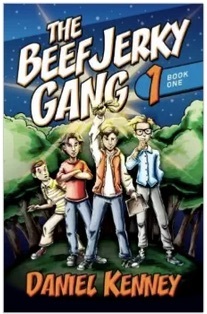 So in September of 2014 I released my first Middle Grade novel, The Beef Jerky Gang. It’s about a group of 12 year-old boys who find themselves living in a dystopian world completely controlled by girls. Pretty good concept. Additionally, it’s got a great cover, is 262 pages, and is oddly funny. This is a good book, one of my best.
So in September of 2014 I released my first Middle Grade novel, The Beef Jerky Gang. It’s about a group of 12 year-old boys who find themselves living in a dystopian world completely controlled by girls. Pretty good concept. Additionally, it’s got a great cover, is 262 pages, and is oddly funny. This is a good book, one of my best.
But other than that initial push of purchases from family and friends, The Beef Jerky Gang doesn’t really sell.
Right after that, I released The Math inspectors. It’s about a group of kids who love math and use it to solve mysteries in the fictional town of Ravensburg, New York. The concept isn’t particularly unique (kid detectives) and the book is fairly short…but it does has a great cover and the word math might draw some parents in.
And you know what? The Math Inspectors DOES sell. Quite a bit.
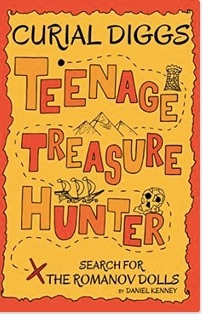 I released another larger book, and it was one I’d worked on for a long time. It’s called Curial Diggs and the Search for the Romanov Dolls. It’s a treasure hunting book with lots of action, humor, and plenty of history and thrills. Got be honest, I had trouble finding the right cover for this book but overall, this is my best book.
I released another larger book, and it was one I’d worked on for a long time. It’s called Curial Diggs and the Search for the Romanov Dolls. It’s a treasure hunting book with lots of action, humor, and plenty of history and thrills. Got be honest, I had trouble finding the right cover for this book but overall, this is my best book.
Curial Diggs doesn’t sell at all. Almost donut levels, in fact.
Reminding myself to stay pragmatic, along the way I shifted gears. The bigger, more expensive to produce books weren’t selling. Not for me. Not yet. Now, in truth, big books DO sell for some middle grade authors. Particularly in the area of fantasy, I’ve noticed. Maybe it’s because children’s fantasy has a certain amount of adult crossover readers or maybe it’s just because these authors write books of awesomeness. But I’m self-aware enough to admit that I might not be an author capable of much awesomeness. Maybe I’m more the kind of author who can put out lots of ‘pretty goodness’ with a side of ‘fairly funny’. Because the truth was, though my big ambitious (for me) books weren’t selling, my short, silly books were. So I responded with short silly books. Lunchmeat Lenny, Middle Squad, Tales of a Pirate Ninja, Dart Guns at Dawn, Math Inspectors 2. All different, but all reasonably short, reasonably funny, and squarely aimed at the 9-11 year old market.
Fast forward to last month when I published The Big Life of Remi Muldoon, my 9th book in 8 months. I’ll publish my 10th book in a few weeks. It’s called But, I Still Had Feet and it’s about Sharks, Snow, and Loose Teeth. Yep, plenty weird. I’ll publish another 4 titles in the next 4 months. And even though Curial Diggs may never sell quite as I’d like, I’ll continue to search for a cover that may one day give it a better chance.
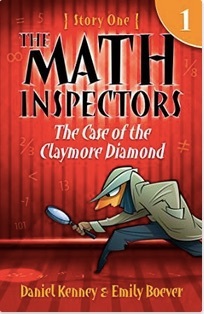 But, I said this was one of those good news emails so let me finally get to that.
But, I said this was one of those good news emails so let me finally get to that.
Last month, I earned around $1400 from my books. This month, I’ll probably earn around $3000.
I’m a stay-at-home dad with 8 kids. $3000 is real money. Really real money. Now that I think of it, whether I had no kids or a hundred kids, $3000 would be still be really real money. But…I know what will happen. Next month, the revenue will go down. I don’t say that in a glum way, just a practical way. And that’s something I always try to be with this Middle Grade self-publishing author thing—practical. Because sometime in the last 30 days, I had a day in which I sold 3 total books among print and ebooks among all 9 books. In case you were wondering, that’s not very good. But, sometime in the last 2 weeks, I also had a day in which I sold over 200 books. And for me, that is REALLY good.
I don’t anticipate selling only 3 books in a day again any time soon. Nor do I expect to sell over 200 books any time soon. What I do expect is that I will establish a new normal for me. And this new normal will be a little higher than it was 2 months ago. From that new normal, I will continue to release new books (mostly short and mostly silly) and over time I’ll gradually increase my sales. One day, I’ll sell a depressingly small amount of books and then some other day, maybe around Christmas, maybe next year, I’ll sell 400 books in one day. Maybe. Maybe not. I’ll continue to peak and valley and plateau but if I continue to plug away, write what interests me, and put titles out there, then over time, I’ve got a decent shot at making a real income out of this writing thing—out of this self-publishing middle grade thing that everybody said was a tough nut to crack. And to state the obvious, that’s exciting for me. But, the secret is, and I try to remind myself of this on those days when my KDP dashboard appears to be broken… I’d make these books even if I didn’t get paid. Like I said before, I’ve got 8 kids. If I wasn’t writing books for them, I’d be telling them stories at night. It’s what I do and it’s fun for me.
Thanks, Hugh, for your generous spirit with other writers and for what you’ve done in the past to advocate for authors and help authors have more information at their disposal. Consider this a very small addition to that conversation.
Okay, that’s enough for me. Time to go change diapers, break up a few fights, and write the next book. Best of luck, Hugh, and have fun living on your new boat. If you ever find yourself sailing it down I-80 towards Nebraska, let me know. I might just have a crew for you. Albeit a mutinous crew that lacks good hygiene. But hey, you can’t have everything.
Thanks,
Daniel
Here’s a link to Daniel’s Amazon page. I think it’s instructive to check out how grabby and polished his covers are. And the titles make me want to read the blurb, a crucial first step.
My favorite line from the email is this one:
I’ll continue to peak and valley and plateau but if I continue to plug away, write what interests me, and put titles out there, then over time, I’ve got a decent shot at making a real income out of this writing thing.
This was precisely my attitude going into self-publishing. Take the long view. Write what you love, because that’s the surest way to keep writing. And slowly build a career over time, with lots of stories out there, as you build a brand.
There is no segment of the publishing market immune to self-publishing’s advantages. Some are just being tested more than others, earlier than others. I really appreciate Daniel allowing me to share his thoughts. I love that what he is pulling off is possible. And that readers are finding his works and enjoying them.
June 17, 2015
This is why no one should publish with Melville House. Ever.
Imagine putting your writing career in the hands of people this dense.
Over at Melville House, a publisher normally known for praising Amazon and being rational and objective about Amazon’s decisions and how they affect the industry at large, the news that Amazon will now pay KU borrows on a page-read basis has led to this absolutely insane interpretation:
What if … KU subscribers have convinced themselves that buying a book and reading a book are the same thing? Amazon will pocket the subscription rate, and KU authors will not receive a royalty if subscribers are taking out books without getting around to reading them.
The fear-mongering here is that Amazon is going to keep readers’ money and not pay authors! Bizarre. How can people who know so little about the industry not only comment on it but be allowed to participate? Amazon is paying its KU authors out of a monthly fund, which is usually in the eight figures. Every penny of that fund is paid out to authors. It will now be paid out according to how many pages are read.
Even in the absurd case where every KU book borrowed is never opened, Amazon would distribute those funds equally to every author whose book was borrowed. Here, the page-read average would be zero, so every author would get an equal number, exactly like what we had before, where the payout was around $1.30 per month. If only a single page was read, by a single reader, out of a single book, that author would get $11,000,000!
If two pages were read, one each out of two separate books, that number would be split in half, and both authors would feel like they won the lottery. But of course, that’s not what’s going to happen. Millions of pages will be read. Tens of millions. And authors will get pennies per page, just as Google pays pennies per click-through. These are New Media mechanisms, and they are being commented on by Old World thinkers.
Imagine when I was a bookseller, that I ran up to every browser who picked up a book and read a few pages, and I shouted:
“Hey! Are you gonna pay for that? The author worked really hard to write that!”
And the browser says, “Uh, sorry. Just seeing if I liked it.”
“Well, now you have to pay for the whole thing. Because I want your money.”
“I’m not even sure if I want to—”
Before they can finish, I’m rushing off to accost someone else who just touched the spine of a hardback without first plunking down their $30.
It’s crazy. Look, some books won’t be opened, and some will be read to completion. And the ones read to completion will get a larger share of the fund. But ALL OF THE FUND will get paid. Amazon isn’t “keeping” money. They are most likely losing money with KU in order to compete with Scribd and Oyster.
The fear that authors will no longer get paid to produce books that no one cares to read is amusing to me. Maybe because I’m a genre author, my knees aren’t trembling. Subscription systems are not like retail systems. Authors and industry pundits need to wrap their heads around this. A borrow is not a lost sale. Often, a borrow leads to a duplicate sale, the winning of a new fan, and more future purchases. Pundits and trad-pub editors need to learn to see subscription ebook services like webpages, where page-views on adverts equals dollars. You don’t reward a website that users don’t like to browse and never click through to the next page.
Readers don’t own KU ebooks. And readers by the millions (myself included) are cool with that. I don’t own all my Netflix content, or all the music I listen to on Sirius/XM and Spotify. I pay a small monthly fee to have access to more content than I can ever consume, to not have to manage my library, to not have to organize thousands of files, and to not have to back up my purchases. Instead, it’s all in the cloud, and I can access it at any time.
That’s worth my $10 a month. I can always find something on KU that I want to read. And yeah, that’s taking money out of the pockets of the Big 5, who refuse to participate in the program because they want to minimize the market size of their number one retail partner!
That’s a whacky decision. Then again, when you see how traditional publishers reason through the simplest of things, you can see why their decisions often make no sense. Can you imagine getting plot advice from people who can’t follow the plot?

